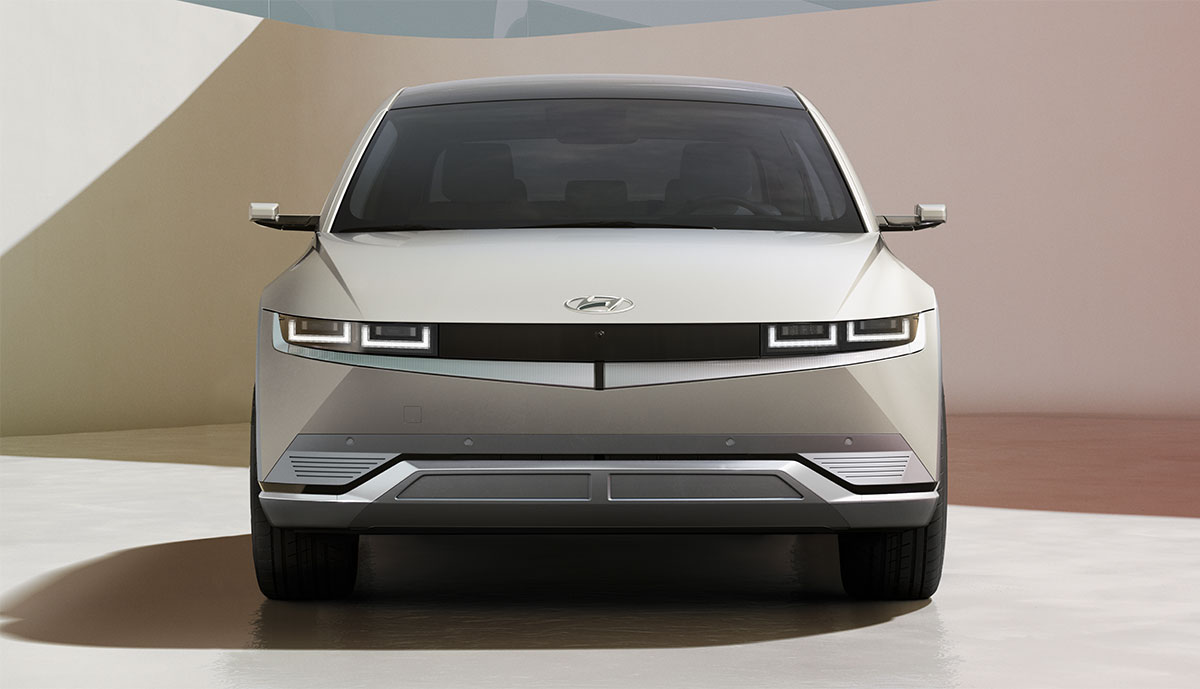Hyundai is working on its so-called car-for-everything technology, V2X for short. Summarizes technologies that can stabilize the power grid with the help of electric vehicles and support the use of renewable energy sources. An applied example of a V2X is Vehicle to Grid (V2G) to feed power from traction batteries to the general power grid for stabilization.
Instead of running high-emissions standby power plants, the power grid could, for example, rely on green electricity stored in high-voltage batteries for electric cars at night, when there is no wind or to lighten peak loads. A special charging station is required for this. With flexible electricity tariffs, owners can charge their e-cars in a timely manner and at lower costs during peak periods. With this system, network operators benefit from lower operating costs, for example due to the elimination of intermediate storage.
In order to be able to support V2G, electric vehicles must be equipped with the appropriate hardware. This includes a bi-directional charger that allows charging and discharging the vehicle’s traction battery. Control of these functions also requires specially configured software. Electric cars can also power homes and buildings. This use of electronic vehicle electricity is summarized under the term “vehicle-to-home” (V2H) or referred to as “vehicle-to-building” (V2B) if the energy stored in electronic vehicles is used to supply a building, such as an office complex, in use.
Hyundai Pilot Projects
Hyundai is currently running two V2X pilot projects with modified Ioniq 5 electric cars in Germany and the Netherlands, one focusing on V2H and V2G. The V2H pilot project is being implemented in Germany by Hyundai in Berlin. The ability to share electricity with the home is being tested in a closed power system. Many of the modified Ioniq 5 devices are equipped with the same onboard bi-directional charger that is also used in production models. However, the experimental vehicles have a specific program to test V2H technology under everyday conditions.
In addition, Hyundai, in collaboration with Dutch mobility provider We Drive Solar, is helping Utrecht to become “the world’s first two-way city”. As part of the project, We Drive Solar will initially provide a fleet of 25 Ioniq 5 for a car-sharing solution offered to residents of recent housing developments. In the next step, the V2G technology Hyundai uses in the modified Ioniq 5 will be tested using public charging stations developed by We Drive Solar for this purpose.
All Ioniq 5 devices already allow electrification of external electrical devices. This can be used to power e-bikes, e-scooters or laptops with up to 230VAC while driving or while stationary. This technology is called “vehicle to load” (V2L) and produces up to 3.6 kilowatts. According to Hyundai, this is enough to run a medium-sized air conditioner or 55-inch TV for up to 24 hours, for example.
V2L and V2G are technically related, but they work with different software solutions. To exchange energy with the power grid as part of V2G, a communication protocol must first be defined between the electric vehicle and the grid. Hyundai plans to use the onboard charger, which is suitable for bi-directional charging and is installed in later V2G production Ioniq 5 models. The South Koreans also want to introduce a new electric car soon with V2G technology.

“Certified tv guru. Reader. Professional writer. Avid introvert. Extreme pop culture buff.”







More Stories
Samsung Quantum Dot TV: Art meets technology
Pitch: €56m for energy startup Reverion
Plastoplan: Plastics for Energy Transition